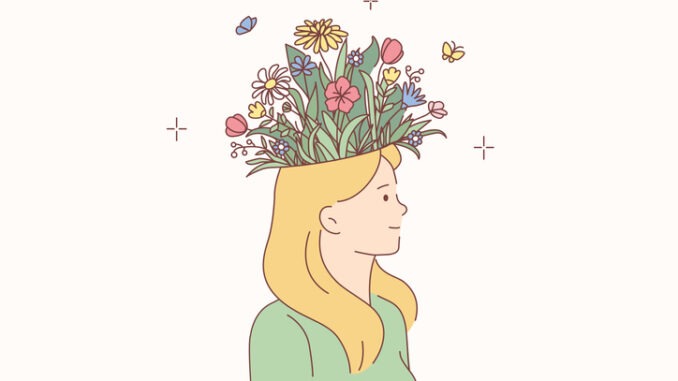
Jacob Krzanowski, associate registrar for sustainability, discusses the important role nature plays when it comes to our mental health
CREDIT: This is an edited version of an article that originally appeared on The BMJ
Although it is said that we live on Earth, humanity has spent its brief history within a thin film on the surface known as the ‘biosphere’. This layer, relative to the Earth’s radius, is as thick as the skin of an apple. Wedged between the vacuum of space and the continental plates, it is remarkable for containing all that we know and do. Nearly every ecosystem, life form, death, landscape, conversation, birth and conflict began and ended here. For many, this space comes close to encapsulating what is meant by nature.
To understand how mental health is informed by the natural world, our dependency on the biosphere is a helpful starting point. An ambitious, but necessarily crude, international framework, ‘ecosystem services’, identifies the following benefits of nature to humanity: resources such as food, water, timber, medicines and fibre; regulation of climate, disease, waste and water quality; cultural experiences such as recreation, aesthetic enjoyment and spiritual fulfilment; support of soil formation, photosynthesis and nutrient cycling. It is not an overstatement to say that ‘nature underpins all dimensions of human health’.
Given our complete reliance on the natural world, it should be self-evident that nature is fundamental to wellbeing and a life relatively free from the pains of mental illness. Indeed, nature has long been viewed as essential both to human life and to restoration, solace, community and meaning. However, recent concerns, such as the COVID-19 pandemic, rising inequality, the climate crisis and the collapse of ecosystems have prompted urgent efforts to understand why and how nature exerts its effects on people.
As the planet gets hotter, much of its surface is seeing a profound transformation. In its 2019 report, the Intergovernmental Science-Policy Platform on Biodiversity and Ecosystem Services described a biosphere degraded by human activity, whereby ’75% of the land surface is significantly altered, 66% of the ocean area is experiencing increasing cumulative impacts, and over 85% of wetlands (area) has been lost’. The term ‘solastalgia’ has been offered to describe the distress felt by people who have witnessed the degradation of land they call home.
Against this background of upheaval and loss, there is understandable concern about people’s connection to the natural environment. In the US, over half of adults spend no more than five hours outside in nature each week. Natural England reports that children’s access to the outdoors is highly dependent on socioeconomic status, with over 10% never visiting the natural environment in any given year. This disconnect reflects cultural shifts across the globe in how people work and spend their free time, and the relatively limited opportunities for contact with nature offered by urban living.
The transition to modernity has also been characterised by a substantial burden of mental illnesses, which are part of the wider group of chronic non-communicable diseases. Multifactorial in origin, non-communicable diseases emerge from genetic risk factors amplified by long term exposure to various stressors mediated by our environment and lifestyle; the aetiology of these illnesses highlights humanity’s sensitivity to our immediate context. As concerns over a growing detachment from nature develop, it is telling that some solutions to non-communicable diseases – including mental illness – can also be found in natural spaces.
Go wild
Efforts to explain how nature affects mental health often converge on its ability to help people manage and respond to stress. Time spent in, or engaging with, nature has been found to reduce negative mood states, enhance positive emotions and lower physiological measures of stress. Most studies are observational, and more robust quantitative methods of analysis have been called for, together with a more consistent and comparable approach to study design.
But this is highly challenging as researchers must navigate awkward questions such as how to define a ‘natural space’ or ‘wellbeing’. For now, natural environments are broadly defined so that contact with an urban green space, or an ancient forest, can be evaluated on equal terms. Explorations of the basis for nature’s therapeutic capacity include the popular attention restoration theory by Kaplan and Kaplan, which proposes that natural spaces evoke states of mind and feelings that relieve mental fatigue and replenish attentional resources.
In addition to this primary supportive effect, evidence is emerging that time in nature also stimulates behaviours that protect against mental illness and maintain wellbeing – by increasing physical activity and facilitating social cohesion and connectedness. The propensity of natural spaces to support socialising and exercise has led to the development and use of nature-based interventions for people with various mental illnesses. Studies of these interventions suggest modest positive effects, at least in the short term, but longer-term evaluations are now required. This is also the type of research that struggles to attract funding because of the lack of opportunity to monetise the interventions. Finally, and most remarkably, natural spaces promote health equity, since their association with better mental wellbeing is stronger among people with socioeconomic disadvantage.
Forever in the background, purposeful engagement with nature introduces a buffer zone between health and illness, so nature could be described as ‘salutogenic’ or health-promoting. By supporting and promoting the natural world, we acknowledge the countless relationships with nature that underpin human health. We should be both excited and humbled by this interdependence.
The environmental activist Satish Kumar provides a helpful summary, “We are nature. What we do to nature, we do to ourselves.”

Be the first to comment